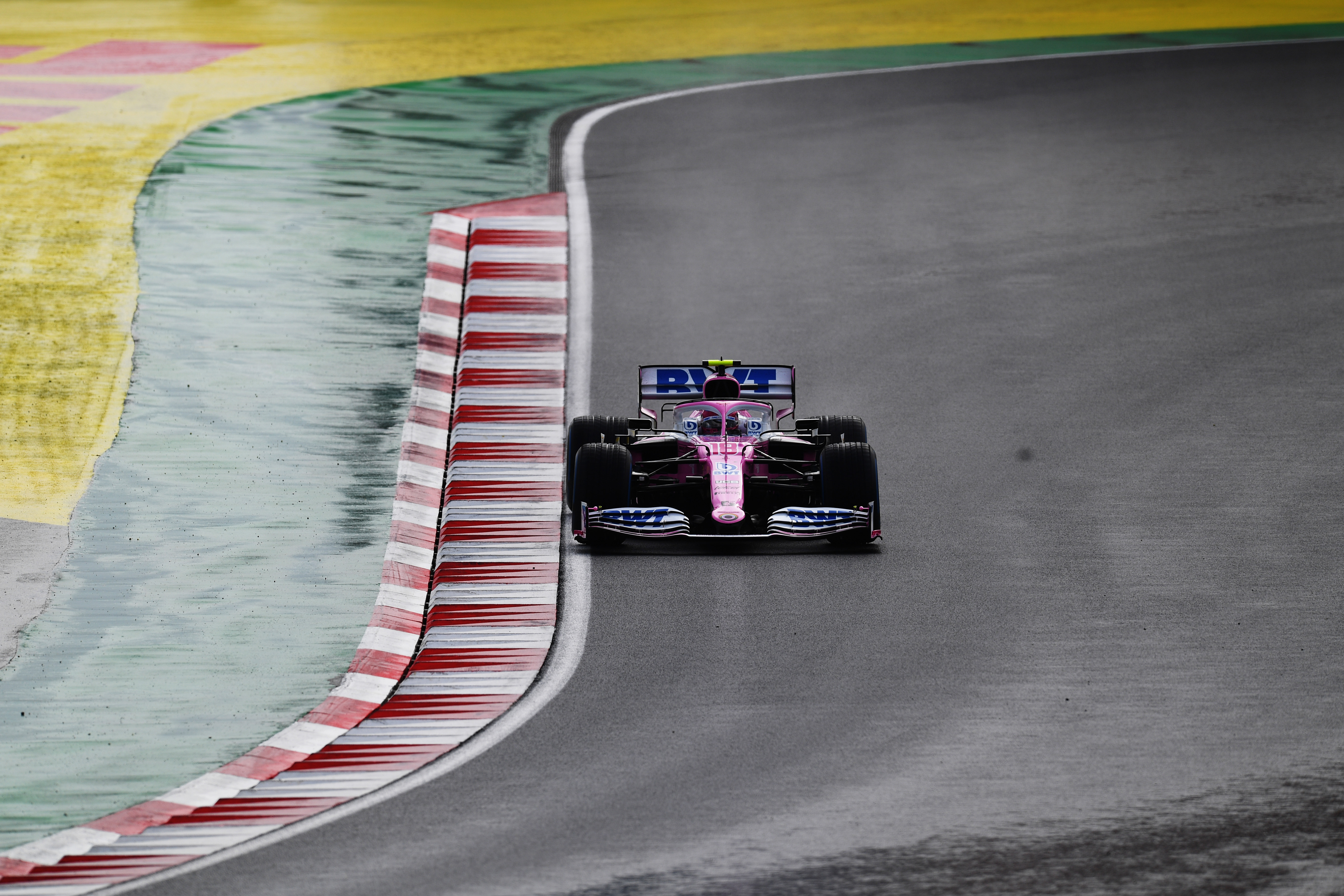Racing Point says Lance Stroll’s slump to ninth after leading most of the Turkish Grand Prix was a result of unseen damage to his front wing.
Stroll qualified on pole at Istanbul in a rain-affected qualifying session and led comfortably in the early stages of Sunday’s wet race as well.
He retained the lead after stopping for intermediate tyres but gradually struggled as the stint developed and suffered from significant understeer and tyre graining.
He had to pit for a fresh set while team-mate Sergio Perez was able to run his first set of inters to the end of the race, another 30 laps.
Stroll struggled even with his new set of tyres and was unable to compete with the other drivers who had a multi-stop strategy, slipping to the back end of the top 10 by the end of the race and finishing ninth.
He said afterwards that he was “so slow, the tyres were so bad” that pitting was understandable even though the likes of Perez and race winner Lewis Hamilton were able to survive the graining phase and then benefit as the inter wore down to effectively a slick tyre on the drying track.
“It was kind of the right thing to do but then the next set grained again and we just went further back so it’s really hard to understand what happened,” said Stroll.

Racing Point subsequently released a statement on Monday afternoon to explain the problem that had unknowingly afflicted its driver.
The team said that a post-race check revealed that “damage to the underside” of the front wing was a “significant contributor to the severe graining issues” Stroll experienced.
“One of the strakes on the underside of the front wing came loose and lodged itself in such a way that the blockage caused a significant loss of front downforce,” said Racing Point.
“The resultant loss of front downforce contributed to increased levels of graining.
“Data during the race confirmed there was a significant loss of front downforce, but with no visible damage to the top side of the front wing, combined with the low-grip conditions, it was difficult to confirm whether the data was correct.
“It was only after the race, when the car returned to the garage, that the damage and blockage to the underside of the front wing was discovered.”


